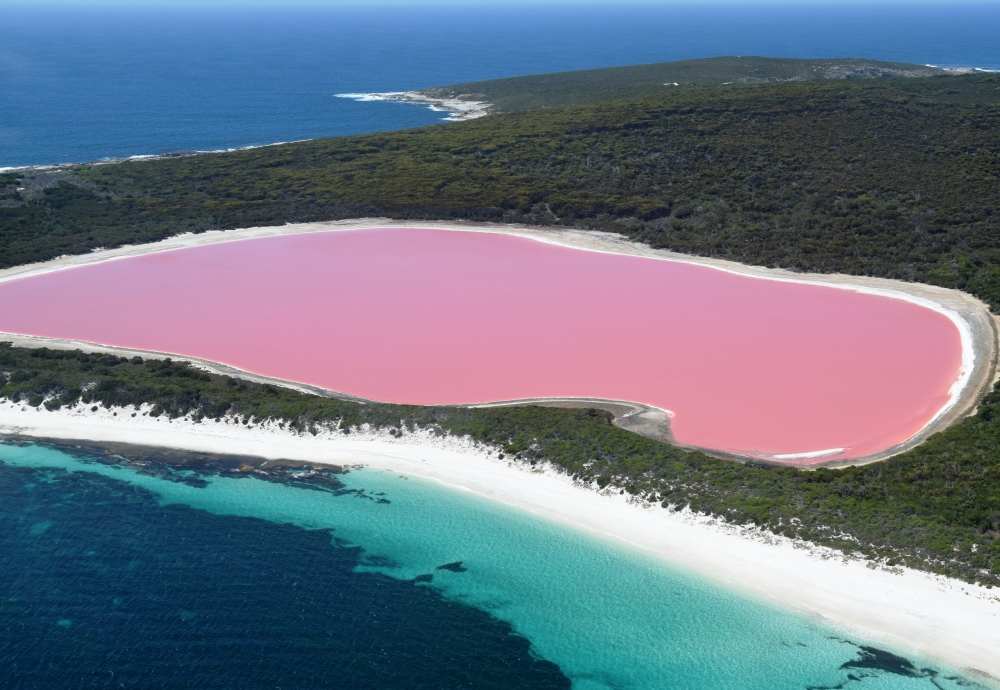Wetlands are full of surprises, but one thing you don’t typically expect them to do is go bubblegum pink overnight. That’s the scene unfolding in the Boondall Wetlands in Brisbane, Australia, where residents were surprised to find the water had mysteriously turned pink. It’s a bit late for this, Barbie marketing team.
Officials did consider if pollution might be behind it, but the leading theory now is that warm temperatures and low rainfall have contributed to an algal bloom.
“You might get a slight breeze that might push [the algae] in and concentrate them up in an area,” said Griffith University Professor Michele Burford to 9news. “I think that’s what we’re seeing here, a concentration of pink algae. They’re probably only going to hang around for a while and then the wind or the tide or something will disperse them out again and you won’t see them anymore.”
Australia is no stranger to bright pink waterways, as its own Lake Hillier (pictured below) is permanently pink. So, why can a usually colorless liquid suddenly adopt such a funky hue?
In 1802, Matthew Flinders became the first to suggest Lake Hillier’s pink color came from its salinity, but in the few hundred years that have followed, science has revealed that this is just part of the story. Research in 2022 decided to take a closer look at Lake Hillier’s pink water, which is eight times saltier than the ocean. Co-founder of the Extreme Microbiome Project Scott Tighe, corresponding author on the paper about Lake Hillier, was inspired to take on the mystery behind its vibrancy after seeing it on TV.
“I thought, that’s amazing,” he told New Scientist. “I’ve got to get over there and grab samples and sequence the heck out of it.” So, sequence the heck out of it he did.

Algae is just one of many microorganisms that gives Lake Hillier its bubblegum pink coloration.
Image credit: matteo_it / Shutterstock.com
Their results showed that Lake Hillier is home to a diverse set of microorganisms including archaea, bacteria, and viruses, but also algae – just like Boondall. All of these microorganisms are pigment producers, and their presence – whether permanent or fleeting – can therefore alter the appearance of water.
Microbial species can range in color from blue, to orange, and through to red as a result of the carotenoids they contain. It’s thought that carotenoids provide protection against high-saline environments – so Flinders wasn’t entirely wrong when he said pink may be the result of salt.
The pink phenomenon that’s swept into the Boondall Wetlands won’t be around for long, so if you’re in Brisbane, go take a peep.
Source Link: A Wetland In Australia Just Turned Pink. Why Does This Happen?